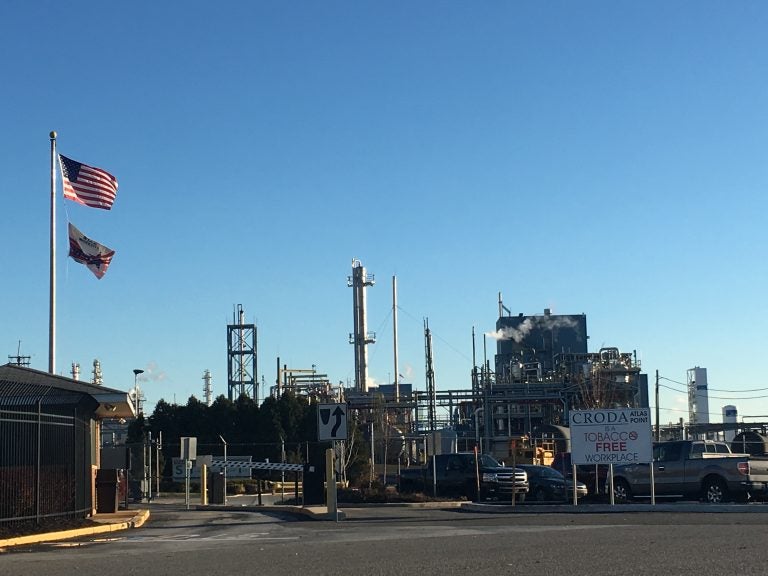Croda gas leak highlights risks to poorer Delaware communities
Some nearby residents were not notified of the gas leak.

A leak at Croda's Atlas Point plant near the Delaware Memorial Bridge caused massive delays for motorists and left nearby residents worried about the potential threat to their health. (Mark Eichmann/WHYY)
As emergency crews worked to contain a gas leak that shut down the Delaware Memorial Bridge for six and a half hours Sunday night, some nearby residents had not been notified of the incident. That highlights the danger of industrial sites in close proximity to residential areas, according to a Delaware environmental group.
The leak of ethylene oxide at the Croda plant forced the Delaware River and Bay Authority to close the bridge as a precaution to protect drivers from the toxic and highly flammable gas. Such a leak is one of the dangers the group Delaware Concerned Residents for Environmental Justice identified in a report issued over a year ago.
Penny Dryden, a member of the group who grew up in the neighborhood near the Croda plant, said there must be better communication with the community about potential hazards residents may face.
“We want a plan … and each family and business that’s located in close proximity to that facility to at least have an idea of what they need to do in case of an incident or an accident,” Dryden said. “Some people had no idea that it even happened, and some heard that something happened, but they didn’t know the details.”
No one was injured in the leak that started after 4 p.m. Sunday afternoon and was finally contained after 11 p.m. The impact on roads in the area was massive with both sides of the Delaware Memorial Bridge shut down for the longest time in the history of the twin spans. The company issued a statement Monday pledging to work with internal and external experts to determine what caused the leak and how to prevent it from reoccurring.
The Croda plant opened in October 2017, the same month DCREJ partnered with the Union of Concerned Scientists to release its report on how some communities in the Wilmington area face “multiple, overlapping toxic exposures.” Croda’s facility is less than 2,000 feet from the nearest residences.
Beyond Croda, the group’s report points to the high number of industrial facilities located in communities of color. “Why are these facilities always located in these communities of color and low income?” Dryden said. “It’s because they can get away with it. A lot of those communities, they don’t have the education and the knowledge to know what’s going on around them. They don’t understand those chemicals.”
As a result, Dryden said, those communities face higher risks of developing cancers and respiratory diseases than their neighbors who live in more affluent areas further away from industry.
The environmental group’s report included seven recommendations that should be the basis of a conversation on that disparity, she said.
Those recommendations include requiring large chemical facilities to share information on all toxic emissions. The report also calls for a comprehensive assessment and mitigation plan for the cumulative health impact of exposures and other risks these communities face.
WHYY is your source for fact-based, in-depth journalism and information. As a nonprofit organization, we rely on financial support from readers like you. Please give today.





